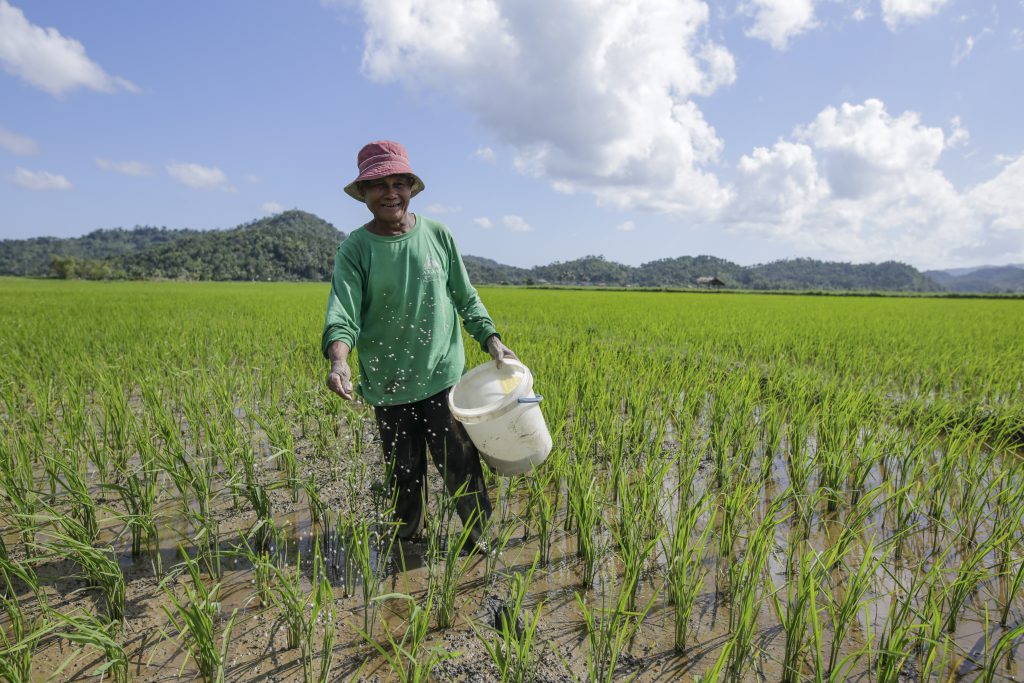
Farmers always aim for bountiful harvest. To attain this, some farmers overfeed the rice crop with nutrients; a huge mistake they often make.
A PhilRice study in Agusan del Norte, where rice fields are supposed to be mineral-rich, showed that deficiency is possible despite the presence of nutrients in the soil. Thus, farmers should only apply needed fertilizers to avoid complications from other nutrients.
Understanding soil properties
Considered under the type II climate, Agusan del Norte has no dry season and experiences occasional flooding especially during monsoons.
Lead researcher Dr. Genevive A. Nemeño said that despite Agusan del Norte’s soil richness in nutrients, their study revealed element deficiencies. Although flood moves nutrients from mineral-rich mountains to the rice fields, crops turn dark green with yellowish-brown lower leaves indicating Potassium (K) deficiency. Spots, stunted growth, and poor root development are also observed.
In 2017 to 2018, Nemeño and her team conducted field experiments during the wet (WS) and very wet seasons (VWS) with four fertilizer treatments.
The study suggested that indigenous Phosphorous (P) level is sufficient for the rice crop in Agusan Del Norte soils, but its level declined during VWS due to increased plant absorption. Thus, 7 kg of P per hectare was recommended to prevent depletion. Results also showed that towering Calcium (Ca) and Magnesium (Mg) levels are in the toxic levels. K levels was also found high for irrigated rice.
Think twice
According to Nemeño, K and Mg have antagonistic effects on each other. Either one gets high, then the other becomes deficient. The combined levels of Ca and Mg in the soil resulted in a wide ratio against K at 170 (Ca+Mg): 1 (K). The ideal ratio is at less than 100:1.
“A ratio greater than 100 will reduce the concentration of potassium in the soil solution leading to K deficiency,” Nemeño explained.
When a series of flooding events occurred in 2018 VWS, it was observed that soil K levels declined even when complete fertilizers (NPK) were applied after flooding. Nemeño attributed this to the high levels of Ca and Mg in the irrigation water carried by flood waters, which caused K inhibition.
As symptoms of K deficiency appears, farmers usually respond by applying a lot of this fertilizer. The soil scientist warned that this should not be the case.
“Farmers should only apply what is needed to avoid complications from other nutrients,” she said.
Nemeño said that too much K will also affect the absorption of Mg in rice. Very low Mg content in all growth stages suggested that despite the very high levels of Mg in the soil, it was not taken up by the rice plant. This was accounted due to high levels of indigenous K that was further aggravated by excessive application of K fertilizers. Thus, the so-called K-induced Mg deficiency.
Further inquiry
“While these findings shed light to the inherent K and Mg deficiency, further research is needed to understand the interactions of nutrients, especially K and Mg, in the soil and how to properly manage them,” Nemeño said.
Meanwhile, the study recommended 53-7-37 of NPK fertilizer application or lower as appropriate for Agusan del Norte soils and climatic conditions.




